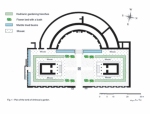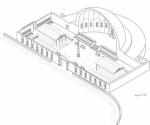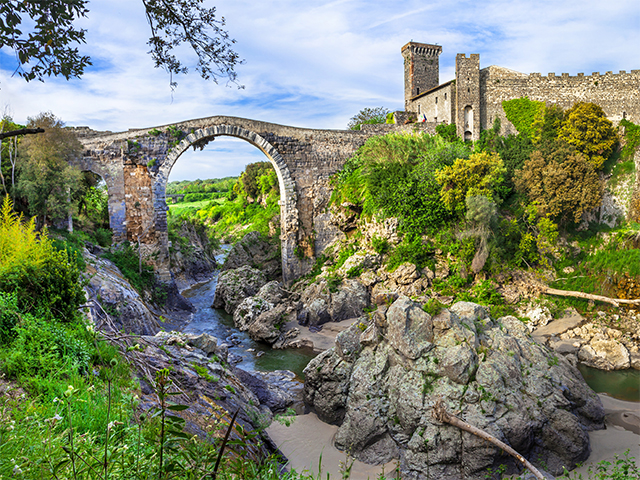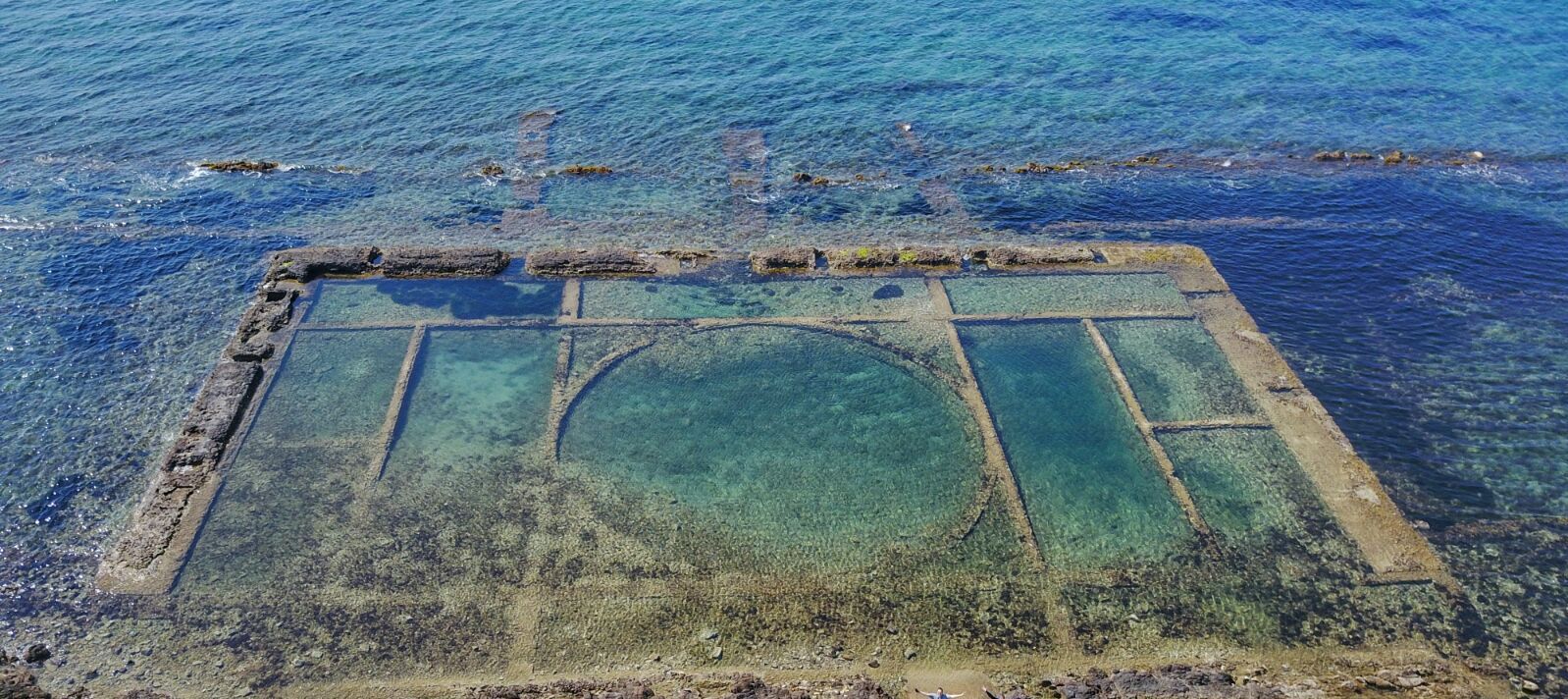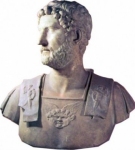 In the year 130 A.D., while Hadrian and his retinue visited Egypt and were sailing on the Nile, Antinous fell from the boat and was found dead. What happened and why it happened was, and still is, a mystery.
In the year 130 A.D., while Hadrian and his retinue visited Egypt and were sailing on the Nile, Antinous fell from the boat and was found dead. What happened and why it happened was, and still is, a mystery.
Spartianus and Cassius Dio gave some very incredible explanation for his death, and I don’t believe any of their hypothesis. The only real fact about it, was that his death hit very deeply Hadrian. However he was an Emperor and a jealous guardian of the imperial dignity and for this reason I can’t believe Svetonius when he tells that Hadrian wept his lover with “feminine mourning wails”. At those times women not only wept but did it with very high and shrill moans while they scratched their cheeks and their breasts until they bled. Hadrian, an emperor would never do such scenes. Of course he must have suffered very much but he went on with his tour as if nothing had happened and did not came back to Rome until the 134 A.D. Of course before leaving the place where his beloved boy had died he transformed the village, Besa, near which the young man had lost his life in a town called Antonopoulos, and built a beautiful temple dedicated to him, a temple for Antinous, a new god, as he had just been declared by the Egyptians. As a matter of fact this people believed that anyone who drowned in the holy river became a god, and Hadrian, who could never promote his lover-boy to the Greco-Roman Pantheon, needed this deification. As a matter of fact at this moment he would have accepted any kind of Antinous deification, because only this could enable him to erect the monumental tomb he had in mind for him back to Villa Adriana.I think everybody knew that Hadrian, who had always lavishly buried even his dogs and his horse, and had restored and adorned tombs of people whom he admired as Alcibiades and Pompeius, would prepare a funerary monument for Antinous in his Tiburtine residence. So thought Kähler and so thought Grenier, only they tried to find it in the wrong place. Both of them, as nearly everybody else at this moment, were persuaded that all the Egyptian statues had been found at the nearby Rocca Bruna and at the Canopus and, therefore, that the so called valley was the Egyptian centre of Villa Adriana. With this idea fixed in their mind it was at the Canopus that they searched for Antinous tomb.Of course it would have been better if, they had spent, as I did, more time studying Piranesi’s map, a survey in which the places where these statues had been excavated were clearly marked with the letters X and Z. Thus it was proved that they were gardens statues from the terraced gardens who stood on top of the hills It would have been even better if they had spent more hours over the XVII and XVIII centuries cadastral maps, and had found the real limits of the holy Fathers properties, but as they didn’t do it they ignored that the Jesuits’ area reached up to the wall of the Pecile and that it was while planting there their vineyards, that the holy men had found at least 20 Egyptian statues, an information that was not difficult to acquire, as it was found in a note of Bartoli, a XVII century antiquarian who wrote that ten Egyptian statues had been excavated “Incontro alle Cento Celle”. Grenier knew what Bartoli had written but chose to interpret the Cento Celle as the Canopus’ Guest House ( only 40 room instead of the 125 of the Cento Camerelle), and this brought him to the fantastic reconstruction of the Canopus with the head of the Isis of the Palestra set in a grotto-like niche, such as the ones in which Roman placed Nymphs and monsters and never goddesses, and in every other niche of the monumental nymphaeum all the rest of Egyptian statues he could find, disregarding the places from which they came. Up to this moment I was not particularly interested in Antinous tomb nor did I certainly dream that I could do another important archaeological discovery in Villa Adriana. But it happened. The tomb of Antinous was one of the researches that attracted the interest of anybody studying Villa Adriana. Now it has been found but it was only the question of the right person, at the right moment, in the right place. I was the right person, but only because I lived in Rome, I surveyed all the 126 hectares of the place, draw its map and also that of all its building and I knew Hadrian work as an architect so well that I could even imagine what he was in train to do in any moment. To conclude I studied the Hadrianic complex for more than thirty years, but above all I had always a lot of luck, and again it was always luck that helped me this time.The finding in question came as a consequence of Dr. Reggiani’s excavations in the Great Entrance Hall and in the area in front of it. Among other things, they brought to light the enclosure through which people got access to Villa Adriana’s Great Entrance Hall. It uncovered the paved road set in a ring allowing the guests’ carriages to reach the stairs preceding the entrance, stop there, get down the passengers and, turning back, get out without creating traffic jams. However, as the excavations had revealed the flower beds in the peristyle of the Hall, and as Prof. Jashemski, whose studies about the gardens of Pompeii are justly famous, was in train of organizing a book about the Gardens of the Roman Empire, a work which will be printed by the University of Cambridge, I, as the curator for Latium, asked Doctor Reggiani if she could contribute to it with an article: Doctor Reggiani agreed and, among other things, gave me a plan of the excavations. As it was in quite a large format, I decided to draw it again on my computer, a digitalization that would have enabled me to easily send it Via Internet to the States. Thus I began to draw and measure everything again and it was at this moment that I got very interested in a huge and composite architectonic arrangement set just at the beginning of the enclosure and outside of it. Up to that moment it had been defined a nymphaeum and I didn’t have any valid reason to doubt it; but it didn’t look to me as a normal one: such a monument was out of proportion with the entrance of the imperial praedium; moreover it would have been too large and imposing to be a simple garden decoration. One of the things that didn’t persuade me was the exedra, or what seemed to be what was left of it, because it looked as if it had been completely destroyed. I, as an architect, could see how this exedra had been planned. I saw that, when completed, it must have been a huge building covered by an apse, just as the Canopus. To prove it we had the rest of two and probably three concentric semicircles, walls 1.30 m wide. In a word this was the same system that Hadrian had employed to erect the Canopus’s and make a structure able to sustain its powerful apse. Exedras were architectonic structures frequently employed by Hadrian and quite often he used them for large ones. At Villa Adriana we find 5 of them. The one I was studying seemed to be just another exedra, but with its 30 m of diameter it would have dwarfed all the others including the Canopus which was only 14 m wide: when finished this extraordinary structure would have doubled its size. Now only these hemicycles emerged from the soil. But who could have worked such a havoc? Certainly after the fall of the Roman Empire Villa Adriana had been pillaged. People stole its columns and marbles for their churches, and made chalks with its statues, but apart from taking the bricks out of its walls they never destroyed any building.However lots of other things began to make me extremely suspicious about this huge and composite architectonic arrangement: I noticed that all the parts of this complex monument, which was composed by the enormous exedra, and by two temples confronting each other just in front of it, were not only set in an enclosure, but - and this was fundamental - everything stood outside the imperial praedium. This was just the way in which a tomb or a funereal monument would have been erected in ancient Rome. At this moment I began to suspect the nature of what I was studying.Now I had no doubt that the structure must have been funerary. Of course we couldn’t exclude neither the possibility that someone had been buried in it, nor that it could simply have been a cenotaph, or a honorarius tumulus as the one that his soldiers had erected in Gaul for Drusus who had been entombed in Rome. Apart from this there was another very important question that was essential: for whom might it have been built? For the moment nothing had emerged from the studies of my predecessors. I examined again what they had left. In 1500 Ligorio, who didn’t excavate there, didn’t see anything. In 1650 Contini, surveying the place, marked that, where the monument was, there was a thicket and wrote that among the trees he had found ruins (the hemicycles of the exedra) which, he believed, to have been completely destroyed by the pillagers. Apart from this he noted nothing else. Also Piranesi saw the ruins and, basing himself on them, he reconstructed a classical temple, an edifice with walls were not parallel to the Pecile or to the Cento Camerelle. Now I could plainly see that this had happened because he had based himself on the rest of a wall found in the area. As you can see in this drawing, it coincided with a partition of the big exedra. Therefore both of them saw the monument, but did not understand it. Piranesi thought that they were the remains of a temple, the “Temple of Ares”. I had studied Piranesi work, but also if at the time of my survey of the area I couldn’t see the walls he put in his plan and which were heavily buried under the soil, I was pretty sure that, whatever the rests seen by Piranesi could have been, they could never have belonged to a classical temple dedicated to a Greek or Roman god, and this for a very good reason: in 1970 nearby this place, I found a mound of marble fragments which, as Egizio one of Villa Adriana’s gardeners told me, had been brought there by his grandfather when this man was tilling a plot of land at the place which, now we know, was Antinous’ tomb. Among them I found a big slab of marble decorated with an Uraeus, and this indicated to me that Piranesi’s ruins were connected with Egypt. To confirm this idea stood also the fact that a large number of Egyptian statues - among which the ones of Antinous in Egyptian dresses, and of Harpokrates, were discovered there, and in this same place many others (at least twenty Egyptian statues or fragments of them) had been excavated - first ten in 1650 and afterward ten more during the XVIIInth century. Probably also the two big Telamons in the form of Antinous in Egyptian dresses, which for a long time were set at the door of Tivoli Archbishopric, came from here. Now, that the last excavations had showed clearly that it was a tomb, there was only one question left: who among the persons around Hadrian was so close to him that the emperor could have planned such an imposing monument, and which of them was connected with Egypt? There was only a possible answer: Antinous, the beloved boy who drowned in the Nile. Only to him, whom he loved so much, could Hadrian in the last days of his life erect such a memorial. At this moment everything was clear. I understood why there were only the foundations of the exedra. What I was looking at was not a destroyed monument; it was one that had just began to be erected and everything now was quite simple: Hadrian could never have planned a tomb before Antinous death, and it was not possible to plan and build it before the emperor’s return from his second tour of the Empire. Hadrian came back at the end of 134 A.D.; the next year would have been spent finding the right place for the monument, making the plans, ordering everything that was necessary for the building and preparing the working yard. I knew that the works could not have begun before 136 A.D. and that the enormous mass of bricks for the exedra could never have been ready before 138 A.D. when Hadrian’s death put a stop to all works, and left it undone. In the meantime, buying all the bricks that had been possible to find on the market, he had erected the lesser parts of this monument: the temples were in fact made in marble and the enclosure walls in square blocks of tufa. The bricks were probably used for the hydraulic works, and, confirming my previsions, brick stamps dated from 131 to 134 A.D. were found in the area However after I had decided that the unfinished enclosure just on the side of that Villa’s entrance was the real place of Antinous’ tomb and after I told it to the Superintendence and explained the reasons on which I based my theory, Dr. Reggiani decided that a small probe was mandatory, and sent Dr. Mari to do it. The ditch was excavated in the monument enclosure and it covered a small area of only 40 square meters at the center of it. Soon important findings began to surface. The two marble temples had been destroyed during the Middle Age’s pillages, but enough of their architectonic pieces and decoration fragments were found to prove that both them and the tomb enclosure decorated by niches had been completed. Moreover Egyptian marble sculptures emerged from the new excavation. Both the findings that came from the area in ancient time and what was found now by Mari confirmed that this monument had been erected in memory of Antinous. Hadrian had decided to build this outsize tombs, but he knew nobody would have excused him if he had done it for the simple boy who was his lover. To do it he had to consecrate him as an Egyptian divinity and he succeeded to create a well followed religion with seats in all parts of his empire. Here at Villa Adriana the monument was not a tomb but the sacrarium of a god: the two marble temples, which preceded the monumental exedra, were clearly destined to host other Egyptian divinities collected there to render homage to the new god. Even some kings of ancient Egypt were brought here to honor the boy, as a fragment of a Ramses II statue - a scroll with the hieroglyphic inscription of the Pharaoh’s name - showed clearly.Among the most interesting findings were the remains of a throne with hieroglyphic inscriptions on its base. Probably it stood in one of the two temples. Beautiful sculptures were brought to light. Fragments from other Antinous’s statues were also excavated and a large marble cobra head found by Mari must have been set on the top of one of the two temple as we could see in a coin with the image of an Isis temple. From what we know, and from the mass of Egyptian statues that were found collected near the unfinished monument, we can infer that by 138 A.D. all the statues and the decorations pertaining to the garden had been completed, while, waiting for the erection of the big exedra, the Antinous’ portraits must have been stored near by the working yard. For the moment Hadrian couldn’t began to build the big funerarius tribunal he had in mind and for which he needed bricks. However, at the end of 135 A.D. or even by 136 A.D, the order to prepare them must have been given. As it took two years, to prepare the clay, shape the bricks, dry them in the sun and bake them they could not have been sent to the working yard before 138 A.D. Everything was ready except this and the place picked up to build the tomb was perfect: it was in view of Hadrian winter bedroom. If he had lived long enough to complete the construction he could always have had it under his eyes: first thing in the morning last at night .Time passed and July 138 A.D. was nearing. The Emperor was dying and with his death all works in Villa Adriana stopped abruptly. Of the colossal exedra only the marks that architects were obliged to set on the soil to sign where the foundations of the structure had to be erected. Of the tomb of Antinous that would have been Hadrian’s last master touch to his splendid residence only these hemicycles were left. An extreme declaration of love to the beautiful boy who died so young.
